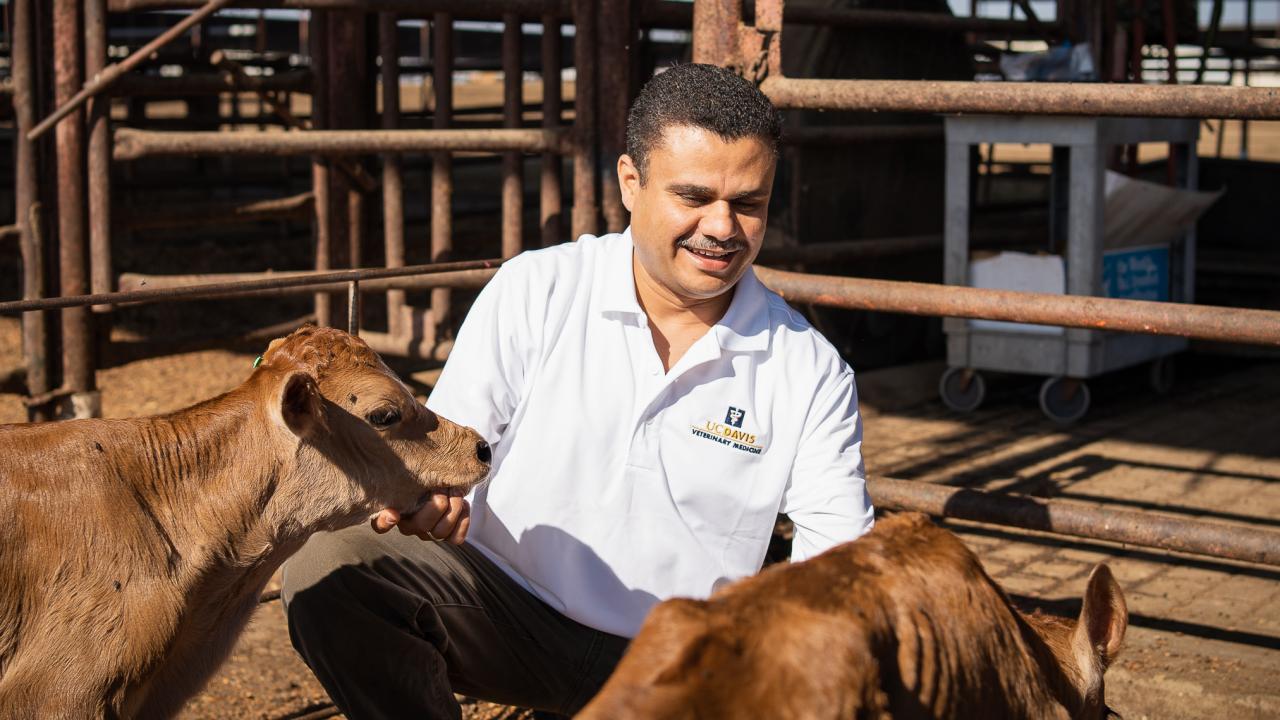
A New App Helps Estimate Herd Prevalence of Bovine Respiratory Disease
Bovine respiratory disease (BRD) is one of the most significant illnesses impacting the health of pre-weaned calves. It’s the #2 killer of pre-weaned calves and of particular interest to dairy farmers in California, the nation’s #1 milk producer.
Thankfully, producers now have a new diagnostic tool in hand—a phone app that leads them through a scoring system for BRD. Producers can view and select photos of clinical signs in the app if they are normal or abnormal. The app tallies the scores and creates a report that can also be shared with the herd veterinarian.
“The strength of this app is not in the simple scoring of one calf,” said Dr. Sharif Aly, professor of epidemiology and biostatisticswith the school’s Veterinary Medicine Teaching and Research Center in Tulare. “Using a random survey sample, the app can estimate a calf herd’s BRD prevalence. Given inputs such as the number of calves and the desired accuracy of the prevalence estimate, the app guides the producer through the appropriate sample of calves to score. We have a lot of large herds in California and it would take hours to walk through and score them all.”
Developed by a research team from the UC Davis School of Veterinary Medicine, the Department of Animal Science and UC Agriculture and Natural Resources (UC ANR), the free app is available for Android and Apple users. It is available in Spanish and Arabic with more languages coming soon.
Aly explained that the app is designed to be used in conjunction with a recently developed risk assessment tool that investigates the factors known to be associated with BRD in calves. Similar to the stroke risk score for humans, the tool is herd-specific and can help producers know their calves’ risk and the management changes needed to control BRD on their farm.
The patent-pending risk assessment is the culmination of six years’ work and two key research studies published in the Journal of Dairy Sciencethat evaluated risk factors for BRD and regional management practices in California dairies. One of the studies scored 4,000 pre-weaned calves across 104 dairies throughout the state. Another study scored 12,000 calves from birth to weaning on six dairies. The studies were supported by UC ANR and USDA grants distributed through the school’s Center for Food Animal Health for a total of $640,000.
“We sought from the beginning to find out how management practices impact calf health and designed studies to give us the magnitude of association of these factors and occurrence of BRD,” said Aly, who served as the principal investigator for the collaborative studies involving researchers and extension specialists with School of Veterinary Medicine, UC ANR, UC Davis Department of Animal Science and the California Department of Food and Agriculture.
The risk assessment tool will soon be available online and Aly said they hope to incorporate it into the BRD app. Once a producer completes the risk assessment, they can then use the app to benchmark their herd’s BRD prevalence. After implementing the recommended management changes, owners can obtain a second prevalence estimate to compare their progress in BRD control.
“Used together, they can be an effective approach to lower BRD prevalence and improve the health of pre-weaned calves on California dairies,” Aly said.
